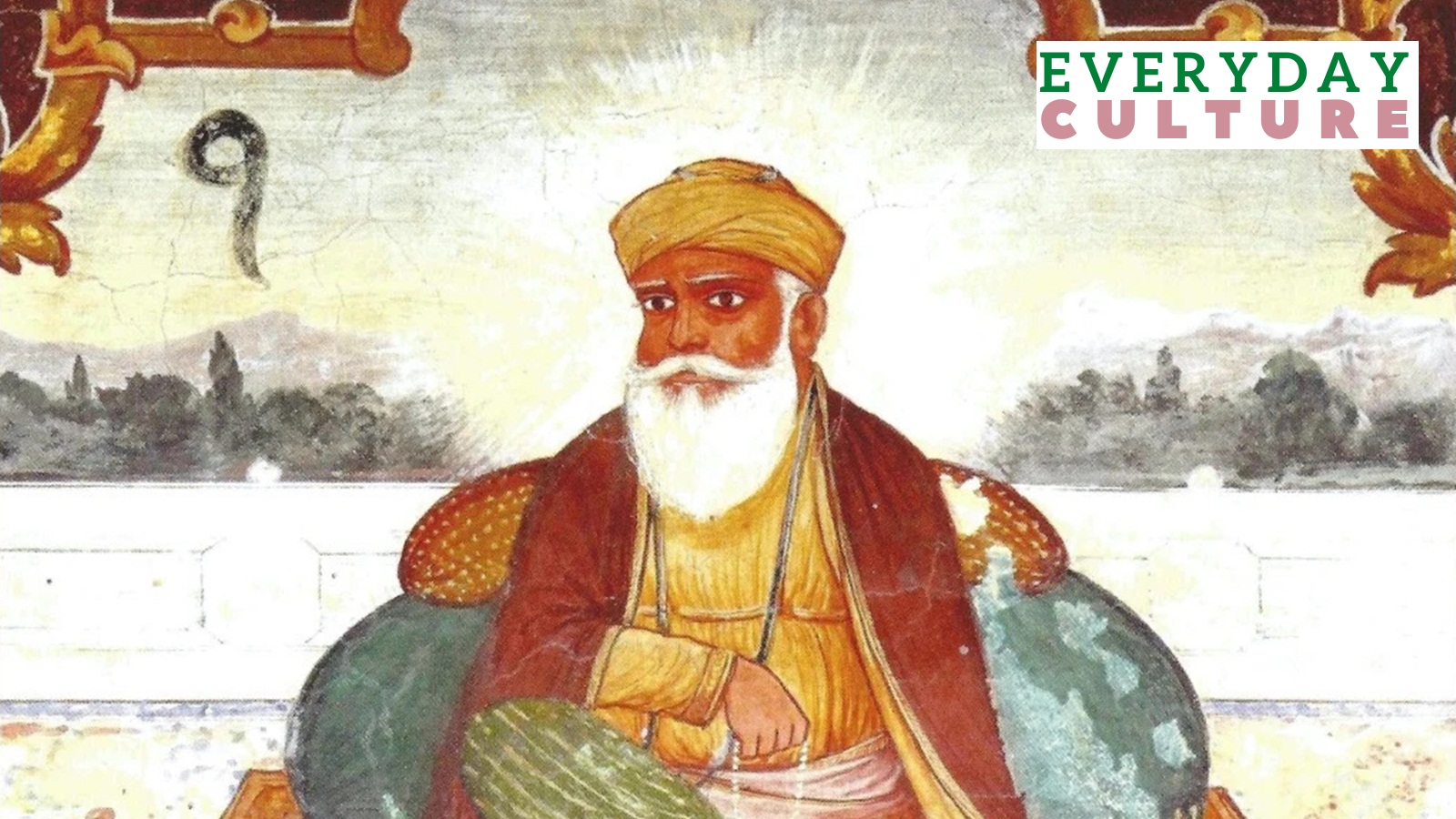Guru Nanak Jayanti marks the birthday of the founder of Sikhism and the first of its nine gurus, Guru Nanak or Baba Nanak. Sikhs celebrate this day with a procession called Nagar Kirtan, which sees groups of people sing hymns and visit gurudwaras.
Nanak’s teachings laid the ground for the emergence of a distinct faith. Among his followers were both lower-caste Hindus and Muslim peasants. Here are five things to know about his life.
1. Born in a Hindu family, he became interested in questions of philosophy early on.
Nanak was born on April 15, 1469, in a Hindu family in the city of Nankana Sahib, which is part of Pakistan today. Since an early age, he is said to have harboured curiosity about philosophical questions – the meaning of life and religion. Following marriage at an early age and the birth of his children, he found himself returning to these enquiries.
After working as an accountant for some time in Sultanpur, he joined a Muslim minstrel named Mardana, according to Khushwant Singh’s book A History of the Sikhs. Singh quoted janamsakhis, which are accounts of the guru’s lives based on oral traditions and some historical information. They say of the two men, “Every night they sang hymns. . . . They fed everyone who came… An hour and a quarter before sunrise he would go to the river to bathe, by daylight he would be in the durbar doing his work.”
2. At the age of 30, he had a spiritual experience.

It was during one of these early morning ablutions by the river that Nanak had his first mystic experience, Singh wrote. “The janamsakhi describes it as communion with God, who gave him a cup of amrit (nectar) to drink and charged him with the mission in the following words:
“Nanak, I am with thee. Through thee will my name be magnified. Whosoever follows thee, him will I save. Go into the world to pray and teach mankind how to pray. Be not sullied by the ways of the world. Let your life be one of praise of the Word (ntim), charity (dan), ablution (isniin), service (sevii), and prayer (simran). Nanak, I give thee My pledge. Let this be thy life’s mission.””
 Devotees participate in the langar on Guru Nanak Jayanti at Gurdwara Guru Nanak Darbar in Pune Cantonment. (Express Photo by Pavan Khengre)
Devotees participate in the langar on Guru Nanak Jayanti at Gurdwara Guru Nanak Darbar in Pune Cantonment. (Express Photo by Pavan Khengre)
He was missing for three days and nights and it was assumed that he had drowned. He reappeared on the fourth day. The janamsakhi said, “Nanak went and joined the fakirs. With him went the musician Mardana. One day passed. The next day he got up and spoke. ‘There is no Hindu, there is no Mussalman.’” Nanak kept repeating these lines.
3. He travelled on foot to spread his message.
Nanak is said to have travelled as far as Sri Lanka, Baghdad and central Asia to spread his teachings. His last journey was to Mecca and Madina, the holiest sites in Islam, and he visited sites revered in other religions, too. These journeys were called ‘udaasis’.
He wore a combination of clothing styles associated with Hindu Sadhus and Muslim fakirs. The janamsakhis speak of the incidents that took place in the course of these journeys. Nanak also spoke with the local pandits, Sufi saints and other religious figures.
4. Nanak spoke to people across communities to preach the Oneness of God.
In one such instance, Singh wrote of Nanak’s visit to Mecca. He was staying in a mosque and fell asleep with his feet towards the Kaba (a cube-shaped structure in Mecca that is considered holy). The act was considered of grave disrespect to the house of God.
“When the mullah came to say his prayers, he shook Nanak rudely and said: “O servant of God, thou hast thy feet towards Kaba, the house of God; why hast thou done such a thing?” Nanak replied: “Then turn my feet towards some direction where there is no God nor the Kaba.’”
Singh traces the word ‘Sikhs’, used for Nanak’s followers, to the Sanskrit words ‘sisya’ (meaning disciple) or ‘siksha’ (instruction or education), also found in the Pali language as sikkhii.
5. How Nanak chose Guru Angad as the second Guru.
Nanak spent the last years of his life in Kartarpur and his disciples followed a particular routine under him. They arose before sunrise, bathed in cold water and gathered in the temple to recite the morning prayer and sang hymns.
Service or sewa was also carried out. It exists to date as a system where people contribute their labour and help the needy through acts such as cooking food for them at the gurudwaras (what is known as ‘langar’). People could then attend to their own matters and congregate again in the evenings for hymn-singing. They would dine and pray again, and then leave for their homes.
This was followed in other gurudwaras, too. One such disciple was named Lehna. As the Guru’s sons were not inclined towards spirituality, Nanak chose Lehna as the guru after him, giving him the name Angad (meaning ‘of my own limb’). He also had a sizeable following of his own.
Guru Nanak died on September 22, 1539. A well-known incident from his life is how Hindus and Muslims sought to assert their own rituals. Khushwant Singh recounted it:
“Said the Mussalmans: ‘we will bury him’; the Hindus: ‘we will cremate him’; Nanak said: ‘You place flowers on either side, Hindus on my right, Muslims on my left. Those whose flowers remain fresh tomorrow will have their way.’ He asked them to pray. When the prayer was over, Baba pulled the sheet over him and went to eternal sleep. Next morning when they raised the sheet they found nothing. The flowers of both communities were fresh. The Hindus took theirs; the Muslims took those that they had placed.”

Ananya Das is your guide to the latest trends, viral sensations, and internet phenomena. Based on a keen understanding of digital culture, Sophie navigates the ever-evolving landscape of trending topics. With an insightful and engaging approach, she explores what’s buzzing across social media platforms, ensuring readers stay in the loop with the most talked-about and shareable content online.


